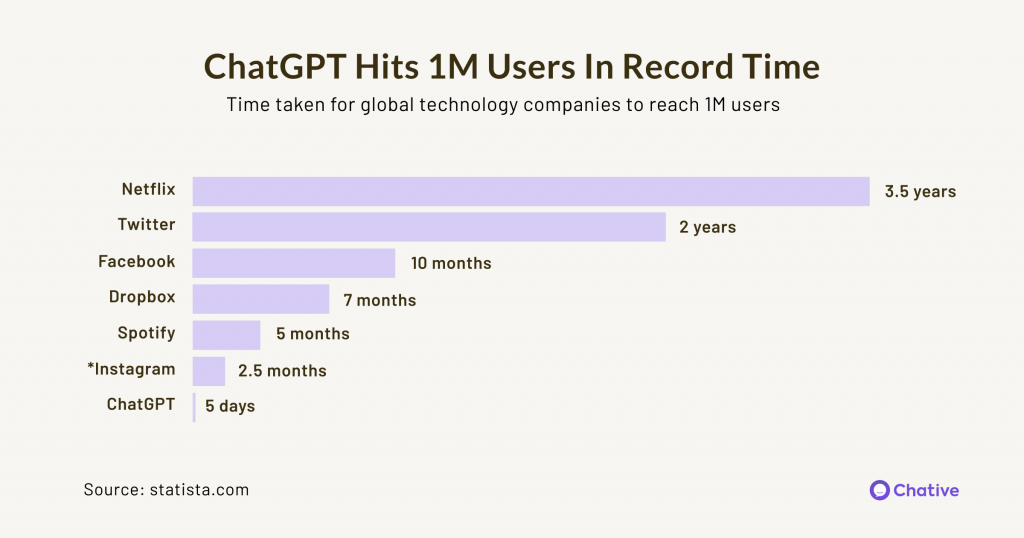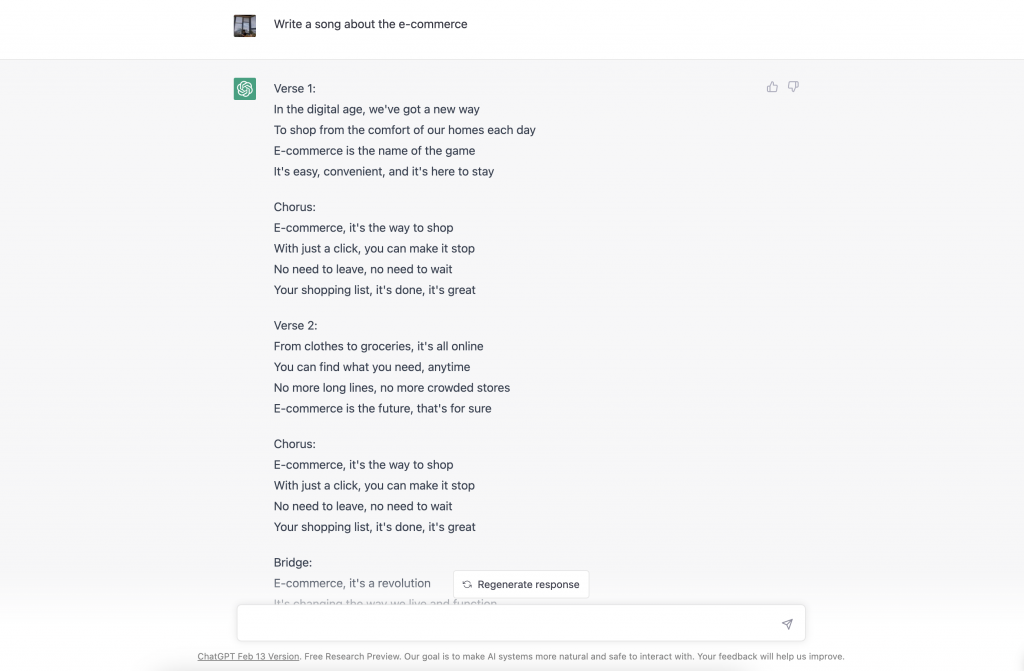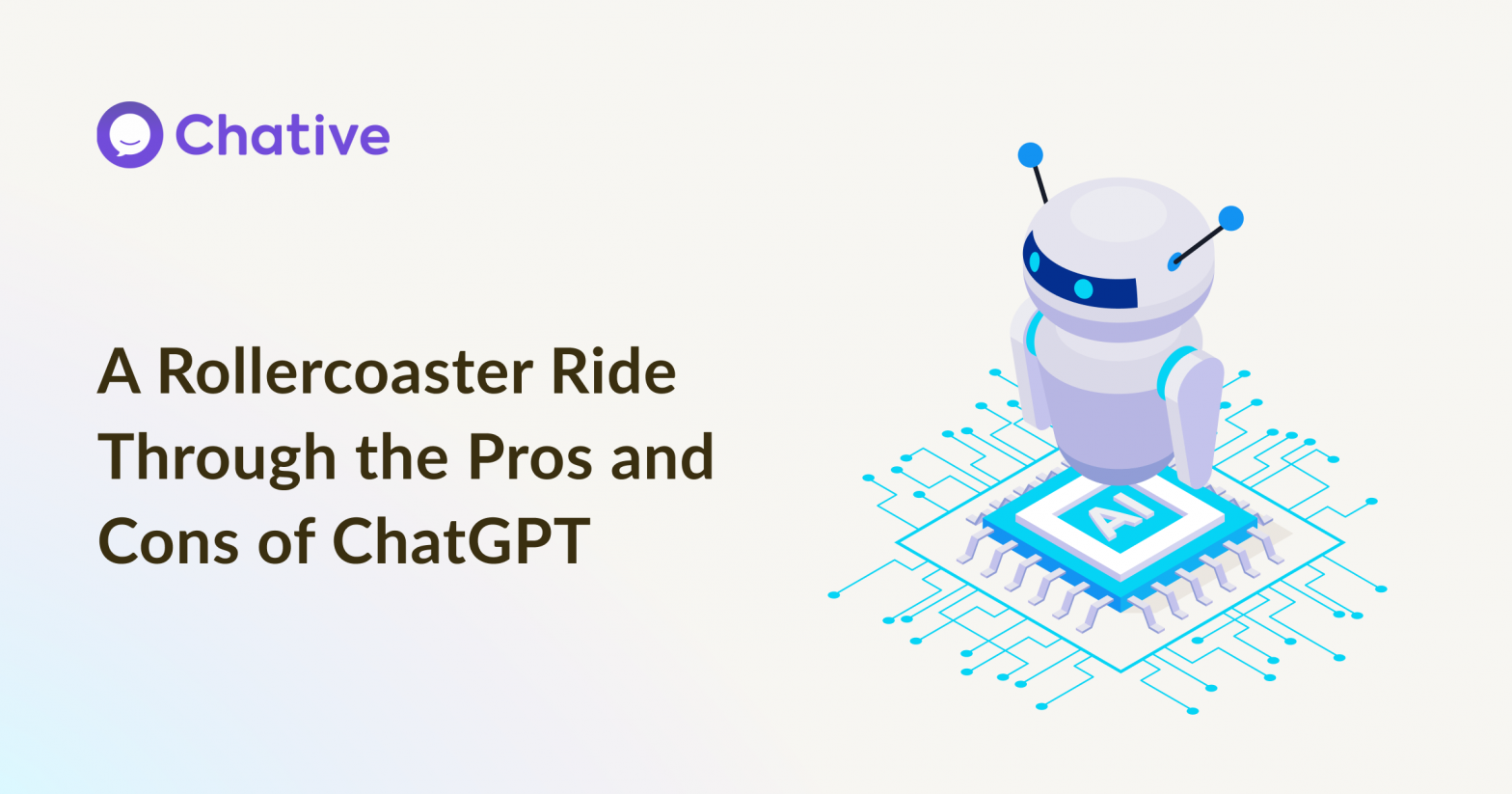With its launch just two months ago, ChatGPT has become a worldwide phenomenon! Already boasting 100 million users and over 700 million Google search results – not to mention 13 million daily active users – it’s clear that ChatGPT has been a hit with internet users around the world.
As advances in AI technology have grown, so too has the public’s concern over its potential to eliminate human roles. Could breakthroughs like ChatGPT really replace people for jobs such as IT engineers and customer service? These questions, along with the perspective about how our future looks like will be revealed in this blog. Whether you’re familiar with ChatGPT or not, join us on a journey of discovery about tech innovation that could soon be part of everyday life!
What is ChatGPT?
ChatGPT (Chat Generative Pre-training Transformer) is a chatbot developed by OpenAI and launched in November 2022. ChatGPT is powered by LLM (Large Language Model) called GPT-3.5. This chatbot has the ability to chat with users as naturally as a real person, which can generate long responses for any requests such as writing emails, writing CVs, planning, coding, etc.
After only 5 days of launch, ChatGPT has reached 1 million users, surpassing famous platforms such as Facebook, Instagram, TikTok, Twitter, Netflix,… which took a long time to achieve. After that, this platform continues to make a hit across Internet communities.

What makes ChatGPT so popular?
Obviously, you can ask ChatGPT any question on any topic. The super AI will answer in detail and fluently. Its ability to “learn” and adapt quickly makes users extremely excited to “teach” it to get the right answers. It even drives the curiosity of those who do not intend to have it to write articles or marketing content. As such, a series of screenshots of interesting conversations between chatGPT and users are also continuously shared on social networks.

ChatGPT: the key is to personalize user experience
Sometimes, chatGPT might say “I’m sorry, but I’m not familiar with the term.” Can you please provide more context or information so I can better understand what you’re referring to?”. However, users still tend to continue chatting, instead of easily leaving as when Google Search gives the result “No matches found”. What is the user retention factor?
The biggest advantage of ChatGPT is its ability to provide the most personalized experience. Although Google and other search engines can provide a wide range of reliable search results, people can still find it difficult to find information. With the ever-evolving development of society, the need to catch the trend increases. Everyone has expectations and looks forward to experiencing “top-notch” technology that can understand, confide, and advise as soon as they need it.
ChatGPT was born at such a time, providing users with an interactive experience like having conversations with human experts. ChatGPT uses artificial intelligence to provide quick answers, while also being able to instantly adapt to new contexts and information. With a simple interface of a chat box that anyone is familiar with, users can query, discuss and exchange ideas with ChatGPT to find the necessary information.
It can be said that ChatGPT provides not only answers but also an interesting interactive experience for users. We can see that personalization and chat experience is the key to the success of this application.
Is ChatGPT really ideal?
The downside of ChatGPT is the reliability of the information. Even if you enter extremely vague keywords, chatGPT will not ask you back for clarification. It will start giving answers to maintain the chat flow.
Mira Murati, CTO of OpenAI admits that ChatGPT can “make up” the information. The dialogue model allows the user to “train” it. However, this creates another risk that users may intentionally give it false information.
There is no denying that ChatGPT can give answers that sound very reasonable but actually have no back-up evidence or real data. At the moment, it cannot access the Internet in real-time. The data of this super AI was collected before 2021, so the input data may be outdated. In short, chatGPT does not verify its own answers.
Can chatGPT replace humans?
The answer is yes and no.
Why there? Anxiety surrounding the emergence of advanced technologies is understandable. In fact, the appearance of machines, robots, and automatic lines have replaced workers in factories, restaurants, etc. Therefore, state-of-the-art AI can also replace stereotyped, formulaic, repetitive, or synthetic jobs that do not require thinking.
Why not? Technological progress will not be a threat but an opportunity, a requirement for mankind to broaden knowledge. ChatGPT, like chatbots and automation, can optimize performance and solve repetitive tasks so that we have time to focus on innovative thinking and sophisticated creativity. Multidimensional understanding and reasoning, independent decision-making, personality, empathy, and complex situation management can be replaced by chatbots. How to make the most of its power is the question that needs to be raised right now.
Future Perspective
The appearance of ChatGPT has changed people’s perception of technology in general and chatbots in particular. With 5 years of experience in the field of high technology, we suppose that the problem of trust between people and bots will be a constant problem in our advanced society. ChatGPT can prescribe medicine, can give lectures, can program software, etc. but do we trust it? The need for personalized interaction is indispensable. Messaging is an increasingly prevailing method. The prospect of collaboration between humans and bots in all aspects of life may also be the “new normal”.
ChatGPT or AI, is still being improved day by day. No one could predict how far it might develop. To stay ahead of the times, we will need to be aware of these factors and develop a comprehensive and innovative strategy towards. Specifically, our responsibility is to find a solution that allows collaboration between human and bot agents, flexibly and effectively.
Thank you for taking the time to read this blog. Looking forward to receiving your sharing to discuss and learn together!
